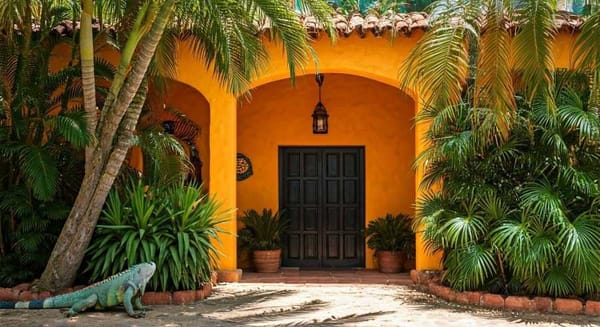Mexico's Biodiversity is the Real Natural Wonder
Discover Mexico's incredible biodiversity, home to over 30,000 plant species, 450 mammals, and 1,000 bird types, including the Mesoamerican Barrier Reef. Despite threats to the environment, conservation efforts are being made to protect this natural paradise.

Mexico boasts an impressive range of plant and animal life, making it one of the most biologically diverse nations on the planet. Despite the significant environmental challenges it faces, Mexico ranks among the top three countries globally for its exceptional flora and fauna variety. This article delves into the factors contributing to Mexico's natural abundance and showcases some of its extraordinary habitats and species.
Diverse Habitats
Mexico's diverse geography has contributed to its rich biodiversity. The country is home to a range of habitats, including snow-capped volcanoes, mangroves, deserts, and tropical forests. The Yucatan Peninsula, for example, is covered with dense jungles and mangrove swamps, while the Baja California peninsula has a rugged desert landscape. The Gulf of California is home to one of the world's most diverse marine ecosystems, while the Sierra Madre mountain range boasts temperate forests.
Barrier Reef
The Mesoamerican Barrier Reef, the world's second-longest barrier reef, runs along the coast of Mexico's Yucatan Peninsula. The reef stretches over 700 miles and is home to over 500 species of fish, 65 species of stony corals, and a wide range of other marine life. The reef is also home to three species of sea turtles, including the critically endangered hawksbill turtle.
Flora
Mexico has more than 30,000 plant species, many of which are endemic to the country. The country's most famous plant is the agave, which is used to make tequila. Other important plants include the prickly pear cactus, which is used in traditional medicine and cuisine, and the vanilla orchid, which is native to the country and used to flavor food and beverages.
Fauna
Mexico has an incredibly diverse range of mammals, with almost 450 different species. Some of the country's most famous mammals include the jaguar, the ocelot, and the grey whale. The country is also home to a wide range of bats, with over 140 species. Mexico is one of the most important countries for bat conservation, with many species facing threats due to habitat loss and disease.
Mexico is also a birdwatcher's paradise, with over 1,000 species of birds. Some of the country's most famous birds include the resplendent quetzal, the Mexican jay, and the roadrunner. The country's most famous birding spot is the El Triunfo Biosphere Reserve in Chiapas, which is home to over 300 species of birds.
Threats to Biodiversity
Despite its incredible biodiversity, Mexico faces serious threats to its environment. Habitat destruction is one of the biggest threats, with forests and other habitats being cleared for agriculture and urbanization. Pollution is also a major problem, with many of Mexico's rivers and beaches suffering from contamination. Climate change is also a growing concern, with rising temperatures and changing weather patterns affecting the country's ecosystems.

Conservation Efforts
To protect its biodiversity, Mexico has implemented several conservation measures. The country has established over 170 protected areas, including national parks, biosphere reserves, and wildlife refuges. The Mexican government has also introduced laws to protect endangered species, such as the Mexican wolf and the vaquita porpoise. Non-governmental organizations, such as the Mexican Fund for the Conservation of Nature, also play a crucial role in conservation efforts.
What can you do to help protect Mexico's biodiversity?
- Learn about the different species that live in Mexico.
- Visit protected areas in Mexico.
- Support organizations that are working to protect Mexico's biodiversity.
- Make changes in your own life to reduce your impact on the environment.
Conclusion
Mexico's incredible biodiversity is a result of its diverse range of habitats, from snow-capped mountains to tropical forests and coral reefs. The country's flora and fauna are unique and fascinating, with many species found nowhere else on Earth. While Mexico faces serious threats to its environment, there are also efforts being made to conserve the country's natural wealth.
By implementing conservation measures and protecting endangered species, Mexico is working towards ensuring that its biodiversity is preserved for future generations to enjoy. It is important to recognize the value of Mexico's natural wealth and the need to protect it for the benefit of both the country and the planet as a whole.
Mexico's biodiversity is a naturalist's paradise, with its range of habitats, flora, and fauna contributing to its rich natural wealth. From the Mesoamerican Barrier Reef to the Sierra Madre mountain range, Mexico has a diverse range of ecosystems that are home to unique and fascinating species.
While the country faces challenges in protecting its environment, efforts are being made to conserve its natural wealth. These efforts must continue, as Mexico's biodiversity is a treasure that should be preserved for generations to come.




